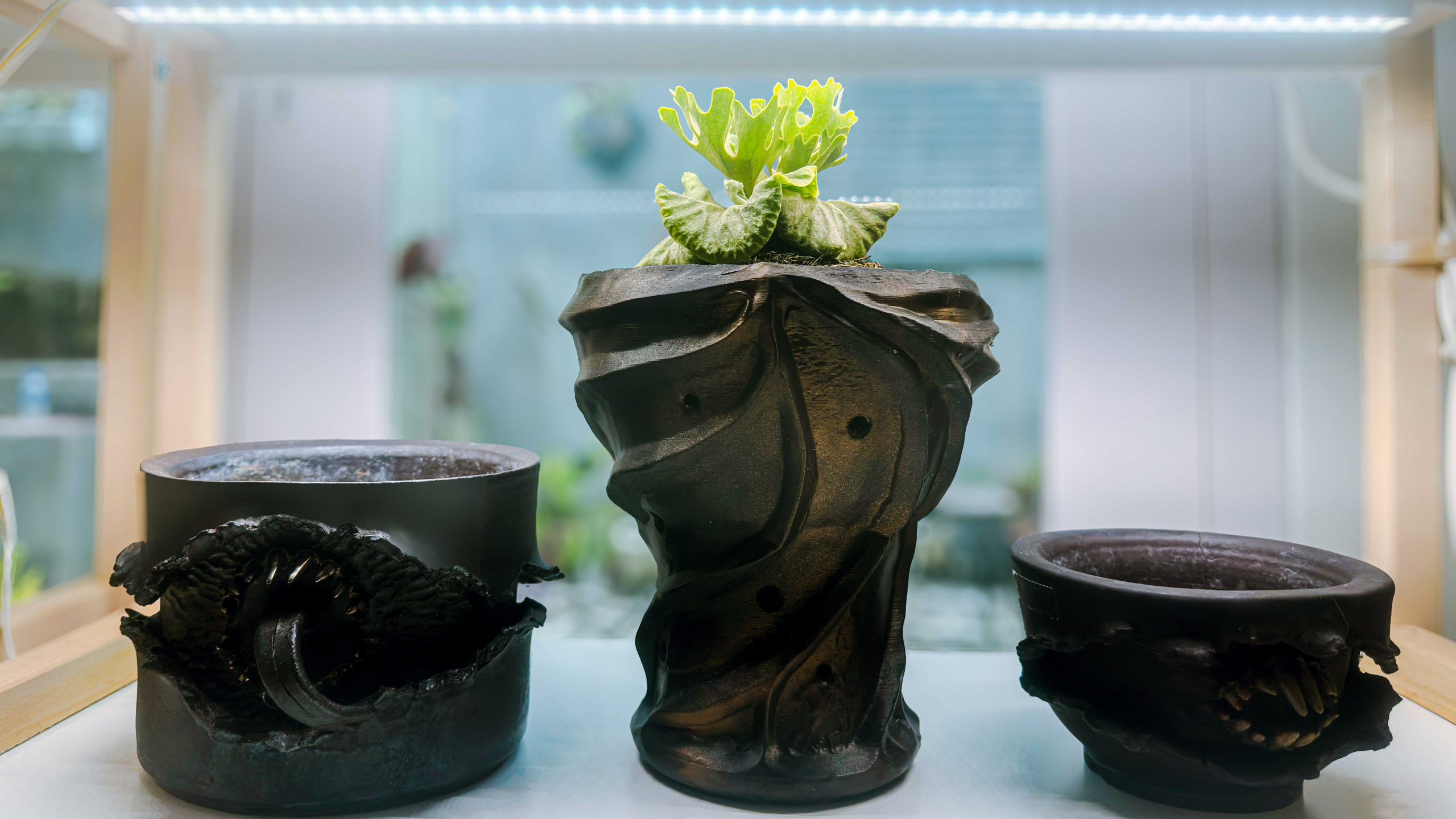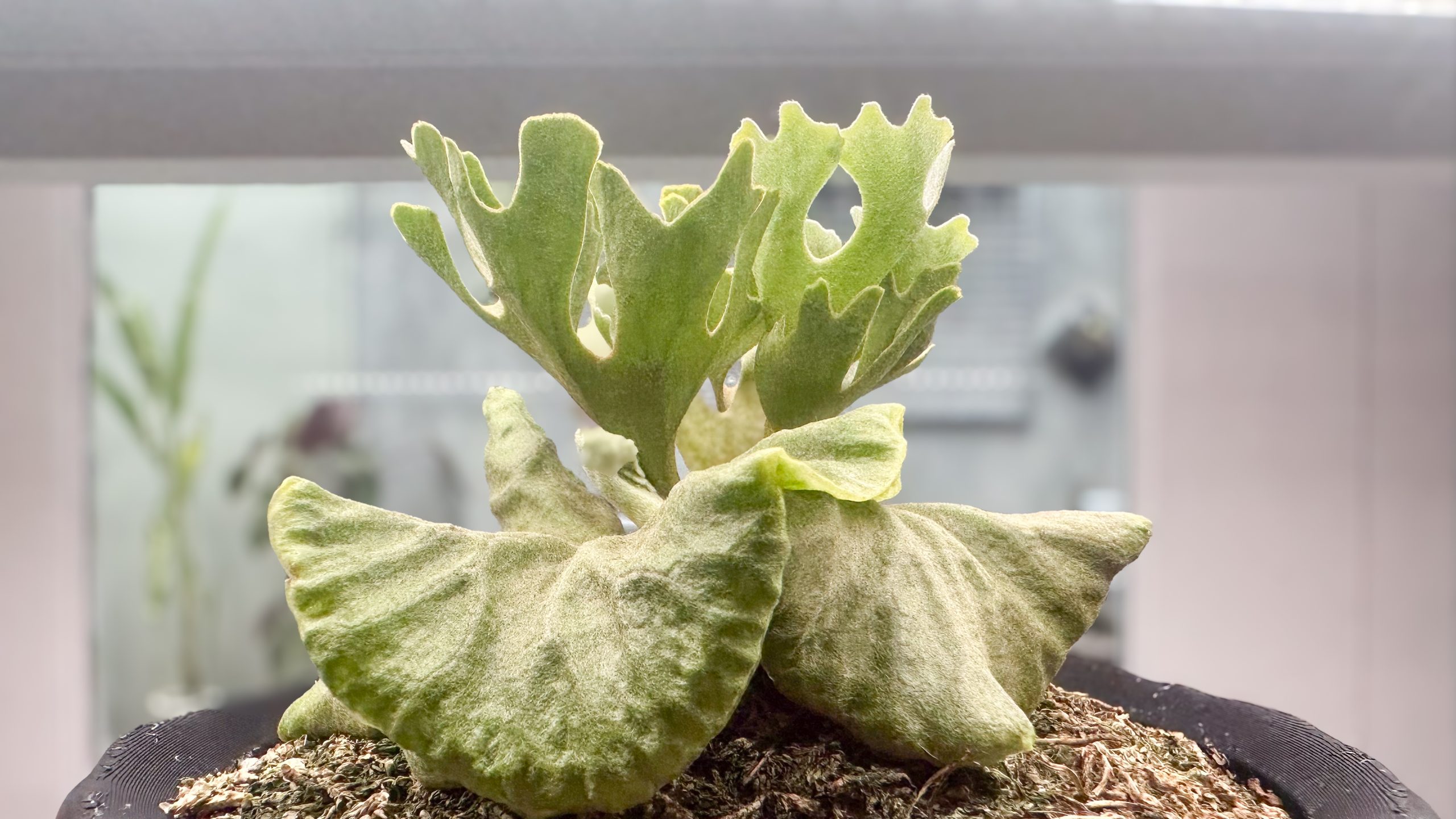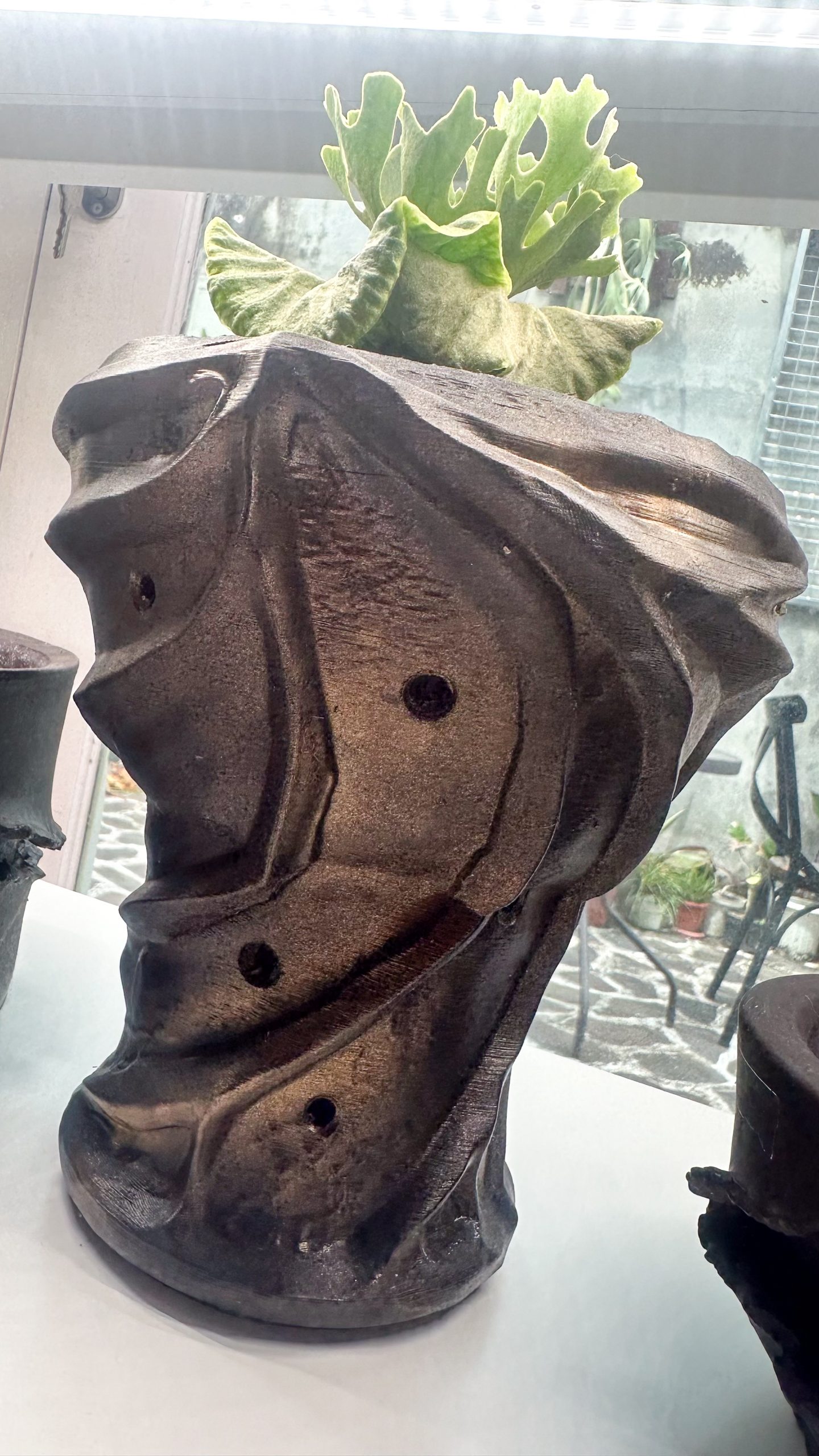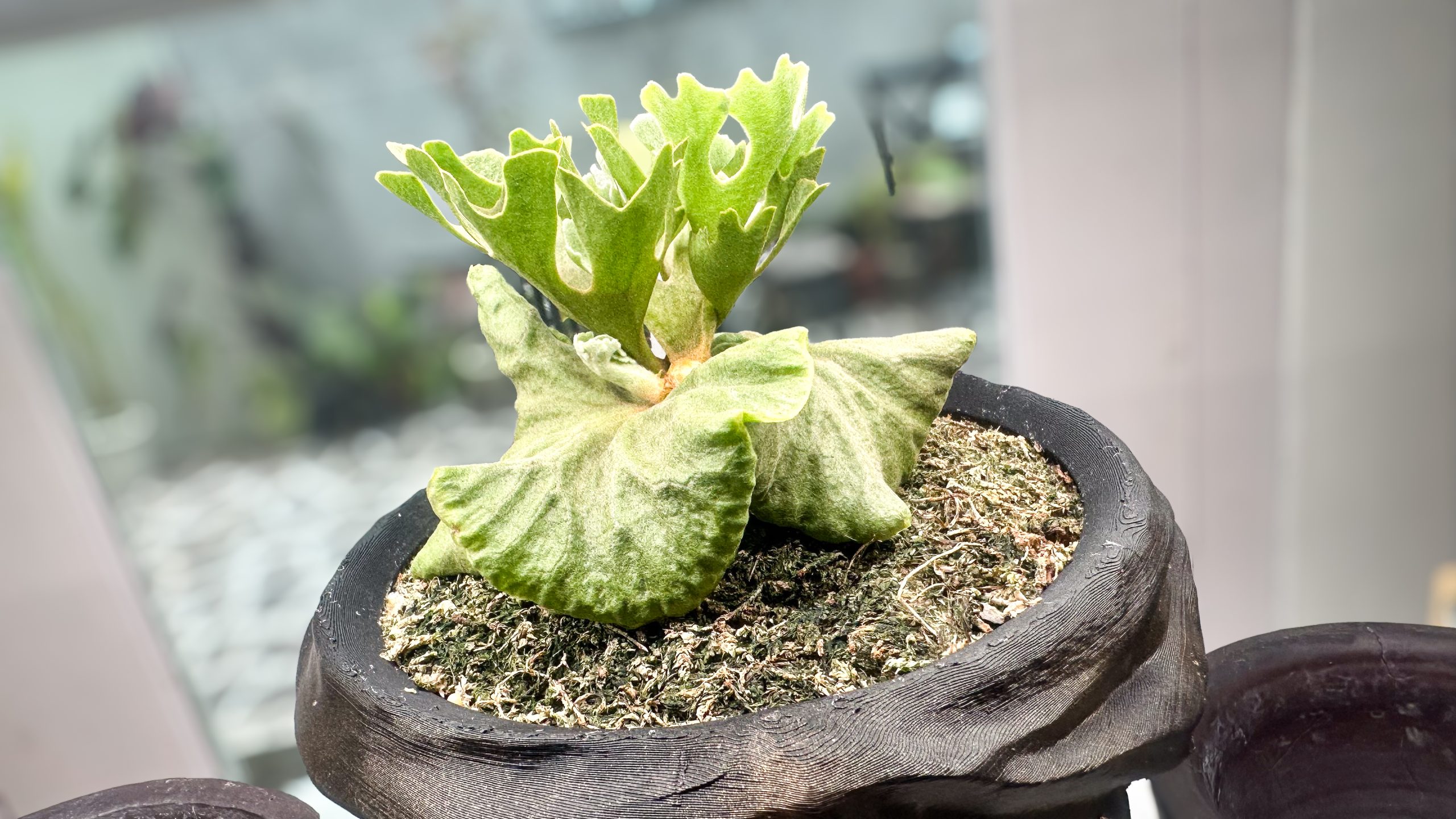Platycerium ridleyi "Silvery Dwarf"
Description
🧬 Family
Polypodiaceae
🌿 Subfamily
-
🌱 Genus
Platycerium
🔎 Species
Platycerium ridleyi
✨ Cultivar / Variety
‘Silvery Dwarf’ (a cultivated, compact form with distinctive silvery fronds)
📍 Native Habitat
Platycerium ridleyi is native to the tropical rainforests of Southeast Asia, particularly in regions of Malaysia, Indonesia, Southern Thailand
Plant Care difficulty
⭐⭐⭐☆☆ (Challenging)
A rare gem in the staghorn family, Platycerium ridleyi ‘Silvery Dwarf’ is a compact, silvery dream for any serious plant collector.
Native to the humid rainforests of Southeast Asia, this epiphytic fern grows naturally on tree trunks, drawing moisture from the air and thriving in filtered jungle light. The ‘Silvery Dwarf’ form stands out with its powdery silver fronds and smaller, space-friendly size — perfect for mounted displays or indoor botanical showcases.
With its sculptural antler-like foliage and cup-shaped shield fronds, it’s both a living art piece and a conversation starter. Though it may require a bit of extra care and humidity, the reward is a truly breathtaking plant that brings a touch of the wild indoors.
#PlatyceriumRidleyi #SilveryDwarf #StaghornFern #EpiphyticVibes #TropicalFern

How to Take Care
The Secret Life of Happy Plants
(No. 01)
☀️ Light
Prefers bright, filtered light — think dappled sunlight like under a tree canopy.
Avoid direct, harsh sun, especially in the afternoon, as it can scorch the fronds.
Indoors, a spot near an east or north-facing window is ideal, or filtered light near a bright window.
(No. 02)
💧 Watering
Likes high humidity and regular watering, but it needs to breathe.
Water when the mounting medium (or root ball) feels almost dry — usually every 3–5 days in warm months, and less in cooler seasons.
Mist the fronds occasionally for humidity, but focus watering at the base and shield fronds from prolonged moisture to avoid rot.
(No. 03)
🌿 Fertilizing
Feed lightly with a diluted orchid or epiphyte fertilizer every 3–4 weeks during the growing season (spring/summer).
Skip feeding in winter or if the plant is resting.
Avoid getting fertilizer directly on fronds — water/fertilize at the base.
(No. 04)
🌱 Soil / Mounting
Best mounted on wood or grown in a very loose, airy mix if potted (orchid bark, sphagnum moss, and charcoal work well).
Good airflow is essential — do not bury the base or use dense potting soil.
Mimic their epiphytic nature (growing on trees) with vertical mounts if you can.
My Journey
The Green Path I’ve Taken





